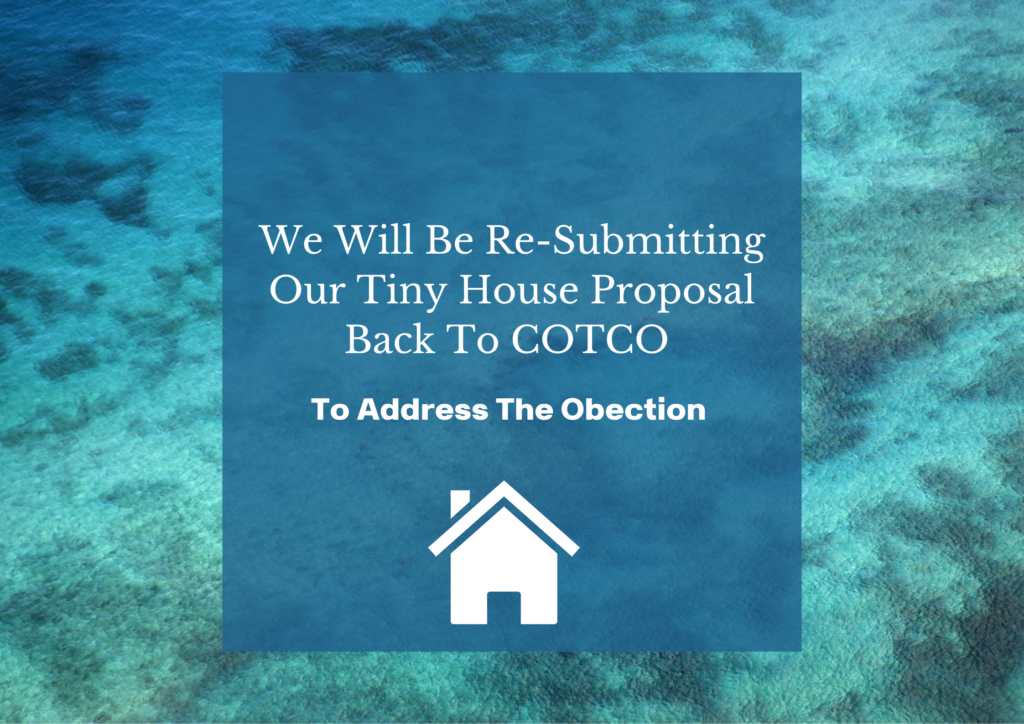COTCO Approved New ASTM Tiny House Committee
At the end of February 2022, we received the amazing news that COTCO, ( Committees On Technical Committees Operations) unanimously granted the tiny house industry a brand new ASTM International technical committee to develop and maintain standards specific to tiny houses. A primary goal is to develop a global uniform construction standard for tiny houses on wheels, certification, micro-grid utilities, tiny house communities and develop standards to complement and supplement IRC AQ Tiny House.
The COTCO Approval Milestone
Receiving COTCO approval was a milestone that we worked hard for that entailed gathering stakeholders from the tiny house industry that negotiated with ASTM for over a year, but our joy was short lived because we received an objection to the new committee from the International Code Council ( ICC ) on the same day. The objection was quite a surprise because we had been in very close contact with ICC to make sure they knew about our potential new standards, our intentions, and how we could collaborate.
ICC states that they feel they have covered everything for tiny houses, including tiny houses on wheels because of Appendix Q Tiny House, the IRC AQ Tiny House ( 2021 ) and the 2 ICC/MHI standards 1200 and 1205. ICC also states that they have covered plan review, inspection, quality assurance, certification, and labeling as well. One of ICC’s subsidiary feels that another standard for a residence is not needed. We are hoping to have a conclusion to their objection and find a collaborative path to work together.
After months of debate, we have decided to re-submit our tiny house proposal to COTCO, to address the objection at the advice of the ASTM executive team.
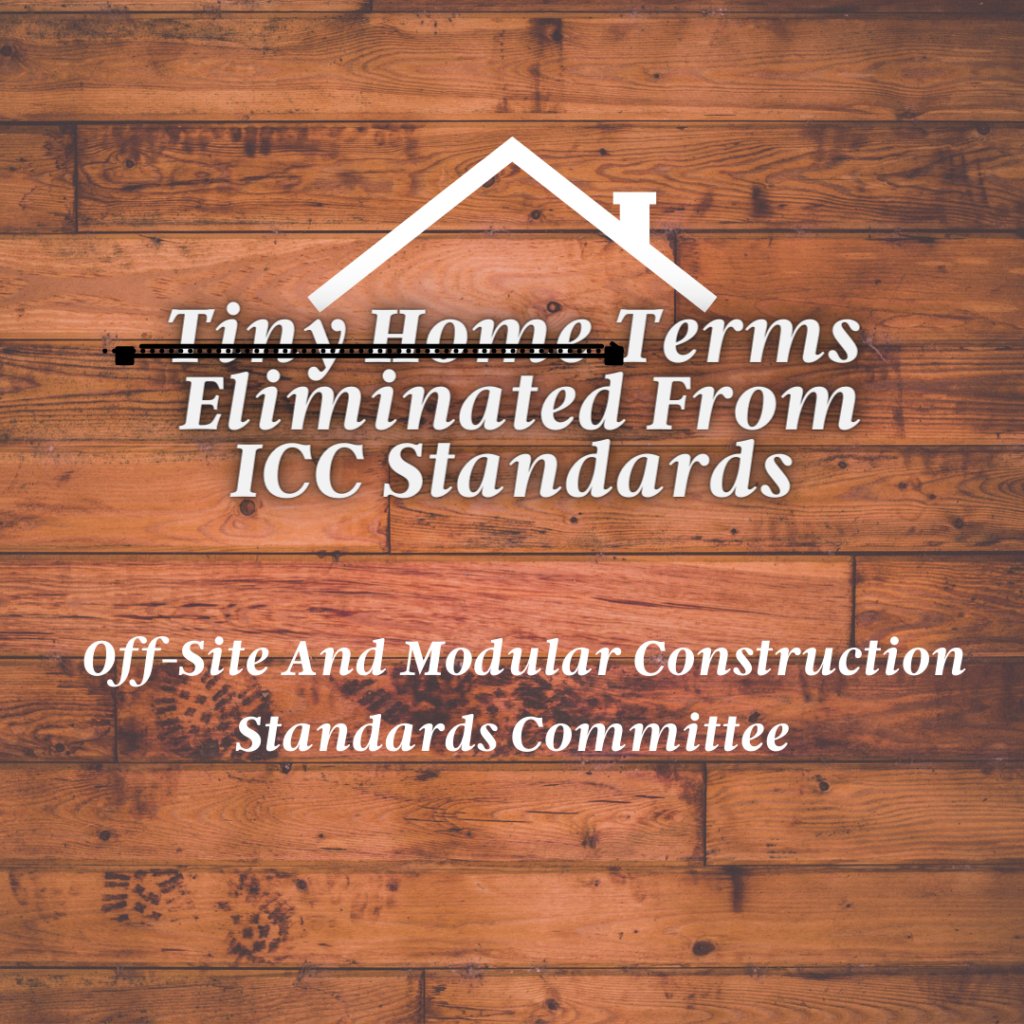
Our Response To The ICC Objection
ICC has voiced a concern concern with the development of standards on tiny homes which would be duplicative and potentially divergent from existing requirements. We do not agree.
Our Response
The tiny house industry lacks uniformity and is a thriving burgeoning industry that has NOT been firmly established in regards to regulations for tiny houses on wheels, which is most typically built to Recreational vehicle standards, or the HUD code, or modular which complies to the local building code and regulations to where the tiny house is transported to. A primary goal of the potential ASTM International Tiny House Committee is to develop a new classification for tiny houses on wheels, a brand new International uniform method of construction specific only to tiny houses on wheels.
Existing requirements for the modular industry has been established for decades and over 35 states have existing state programs, but not for tiny houses.
ICC has also stated that there is not a need for another construction standard that is a residence. The IRC and manufactured home standard already exist. ( HUD 24 CFR 3280 and the NFPA 501 standard).
Our Response
- The ICC codes and standards state they do not preclude other practices or methods of construction
- Appendix Q Tiny House and the IRC AQ Tiny House apply to tiny houses on a foundation 400 square feet or less.
- The 2 ICC/MBI standards 1200 and 1205 that were developed at the ICC Off-Site And Modular Construction Standards Committee have deleted all tiny house terms in the scope of the committee, the scope of the 2 standards and within the body of the 2 standards. Learn More.
NFPA 501: Standard On Manufactured Housing is withdrawn as of April 13th, 2022
- Both standards are administrative in nature. Modular still must meet relevant building codes. The standards are also OFF-Site Specific.
- We represent a lot of stakeholders who are do it yourselfers and have or will build their own tiny house on site. See ICC Off- Site Codes Working Group
- ICC does not have the power or authority to police or enforce compliance with the contents of this standard. Only the governmental body that enacts this standard into law has such authority. The highlighted statement is directly from ICC-yet ICC is trying to enforce tiny houses to be in compliance with both standards against the will of a large portion of the tiny house industry that desires to develop standards specific to tiny houses with ASTM International and stakeholders in the tiny house industry.
See statement under Maintenance- submittal of approval. The tiny house industry does not desire to be broadly swept under modular construction and to be considered ‘’inclusive’’ by the ICC Off-Site And Modular Construction Standards Committee which lacks adequate representation of a broader group of stakeholders.
The tiny home/house terms have been deleted from both ICC/MBI 1200 and 1205 and ICC is trying to force compliance of tiny houses to accept the requirements of modular manufacturers for plan review, inspection, quality assurance, and certification. NOAH, and Pacific West Associates, are the two most popular 3rd parties that certify the manufacturers that build tiny houses and cannot meet the requirements in ICC/MBI 1205, which are maximum requirements, not minimum. ASTME541 is the minimum requirement in the marketplace. - Both standards are American standards meant to be adopted by jurisdictions in the US. This is an international initiative.
- There is a limitation with the IRC, because the states are at different levels of ICC code adoption. You may have one state that’s on the 2009 codes, one that’s on 2015, and some that have adopted the 2018 or 2021 codes. There are also states that have their own codes. See International Codes-Adoption By State ( Jan 2022).
Modular construction is one method of construction and is not an affordable solution for tiny houses on wheels because of the cost of all the required plans for each structure and the chassis, including architectural, mep, structural, and civil if attached to the soil.
There is a global housing crisis, and we need every viable solution that exists for housing. The ICC is not a regulatory body for a vehicular unit that is regulated by DOT and NHTSA, which applies to US regulations.
HUD 24 CFR 3280
HUD does not officially regulate tiny houses on wheels. If a tiny house was built to the HUD code, the label would be a manufactured home label.
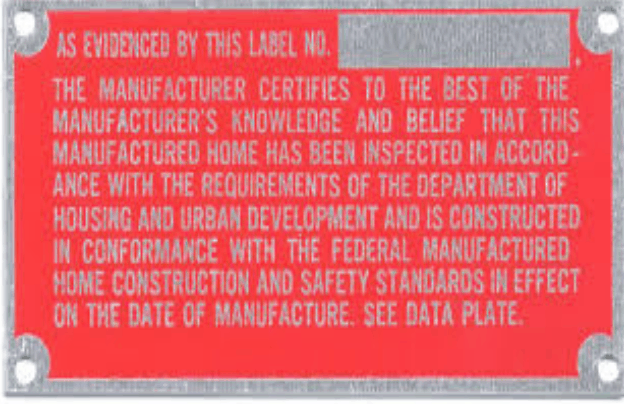
The HUD Code
The National Manufactured Housing Construction and Safety Standards Act Construction and Safety Standards Act of 1974 (the Act) 1 authorizes HUD,authorizes HUD, through its Office of Manufactured Housing Programs (OMHP), to establish and amend the Federal Manufactured
Home Construction and Safety Standards (HUD Code) and the Procedural and Enforcement
regulations, codified at 24 CFR parts 3280 and 3282, respectively.
This authority authorizes HUD to issue and enforce appropriate standards for the construction, design, performance, and installation of manufactured homes—formerly known as mobile homes—ensure their quality, durability,affordability, safety. Since the HUD Code’s inception in 1976, Recreational Vehicles (RVs) have been largely exempted from the HUD Code.
Self-propelled RVs are statutorily exempted, and other classes of RVs which HUD maintains statutory jurisdiction have been exempted by regulations codified at 24 CFR 3282.8(g). Over time, the RV exemption has evolved.
Since codifying its regulatory exemption in 1982, HUD has exempted RVs from both HUD’s Manufactured Home Construction and Safety Standards at 24 CFR part 3280 and its Manufactured Home Procedural and Enforcement regulations at 24 CFR part 3282 if they are:
Built on a single chassis; 400 square feet or less when measured at their largest horizontal projections; self-propelled or permanently towable by a light duty truck.
HUD Final Rule: Manufactured Home Procedural and Enforcement Regulations; Clarifying the Exemption for Manufacture of Recreational Vehicles
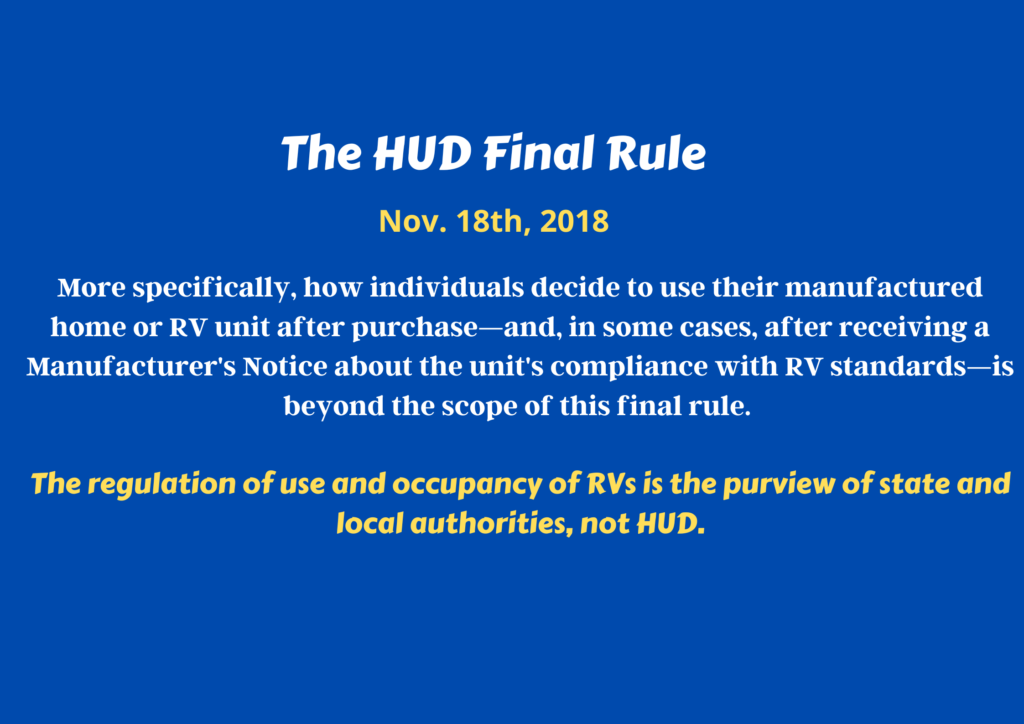
HUD Response: As explained above, this rule does not regulate the use of manufactured homes or RVs but serves to expand the exemption for RVs, and to provide for a clear way of determining whether RVs that meet the statutory definition of a “manufactured home” are exempt from complying with HUD’s Manufactured Home Construction and Safety Standards and Procedural and Enforcement regulations.
The rule does not address “seasonal” or “permanent” occupancy or distinguish between RVs that are permanently placed in a park or campground and those being used to travel the county. This rule should not be used by RV parks to evict residents out of fear of legal consequences. “permanent” occupancy or distinguish between RVs that are permanently placed in a park or campground and those being used to travel the county. This rule should not be used by RV parks to evict residents out of fear of legal consequences.
HUD maintains statutory jurisdiction over the manufacture and installation of all structures falling within the statutory definition of “manufactured home,” but it elects not to regulate all structures that qualify for the RV exemption.
Because this rule does not prohibit or regulate the use of manufactured homes or RVs, including tiny homes, the secondary consequences described by certain commenters are moot, and HUD does not believe that there exists a need to address them individually.
HUD also states that this rule does not dictate the minimum square footage of a home, nor does it require modular homes to be “as stable” as foundation-built homes.
HUD respectfully disagrees with the various fundamental premises and conclusions of these commenters about secondary effects. Initially, as stated in this preamble, HUD is not regulating use of manufactured homes or RVs.
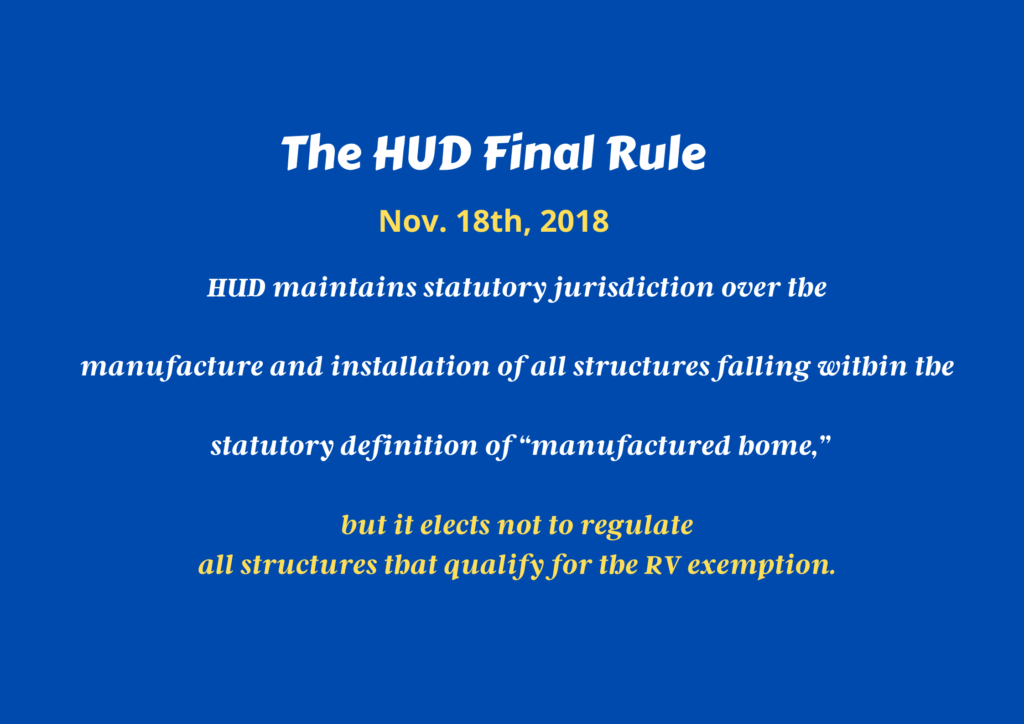
More specifically, how individuals decide to use their manufactured home or RV unit after purchase—and, in some cases, after receiving a Manufacturer’s Notice about the unit’s compliance with RV standards—is beyond the scope of this final rule. The regulation of use and occupancy of RVs is the purview of state and local authorities, not HUD.
Model Legislation For Tiny Houses
ICC co-authored Model Legislation for tiny houses that was published on the ICC website on May 4th, 2022 with a tiny house trade association promoting compliance to the IRC AQ Tiny House, and the 2 ICC/MBI standards 1200 and 1205.
There is a footnote regarding tiny houses and manufactured homes, that we do not feel is correct because of the HUD regulatory exemption in 1982. The Model Legislation States:
‘ Tiny houses on wheels with a permanent chassis over 320 square feet are subject to the Manufactured Home Construction and Safety Standards administered by the US. Department of Housing and Urban Development. Where these requirements apply, a manufacturer may opt-out if they then follow requirements equivalent to those contained in a model building code.
At this time, HUD does not officially regulate tiny houses on wheels of any size. In the US, most tiny houses on wheels are built to RV standards, the 3rd party label would state compliance to NFPA 1192 or ANSI 119.5. If a tiny house was built to the Manufactured Home Construction and Safety Standards-it would be classified as a manufactured home, not a tiny house on wheels.
Also referencing the 2018 HUD final rule again that applies to the 320 square foot statement and HUD regulation of structures.
Over time, the RV exemption has evolved. Since codifying its regulatory exemption in 1982, HUD has exempted RVs from both HUD’s Manufactured Home Construction and Safety Standards at 24 CFR part 3280 and its Manufactured Home Procedural and Enforcement regulations at 24 CFR part 3282 if they are:
Built on a single chassis; 400 square feet or less when measured at their largest horizontal projections; self-propelled or permanently towable by a light duty truck.
The ICC claims that they have covered everything for tiny houses, including tiny houses on wheels yet in their own words, there are more requirements as stated in the model legislation:
‘While design and construction requirements are tied to the IRC, tiny houses with a chassis and wheels may also be subject to additional requirements to support their transportation.
In this case, additional certifications may be required.’
What I find interesting is that ICC has claimed to us and ASTM that tiny house terms are NOT needed in ICC/MBI 1200 and 1205, because they rationalize that tiny houses are inclusive of modular construction and do not need to be called out. But yet………they have to produce another supportive document-model legislation that adds the tiny house terms back so an authority having jurisdiction will understand that tiny houses are inclusive without the tiny house terms in the standards.
Tiny House Owner Told To Vacate By Meridian Code Enforcer
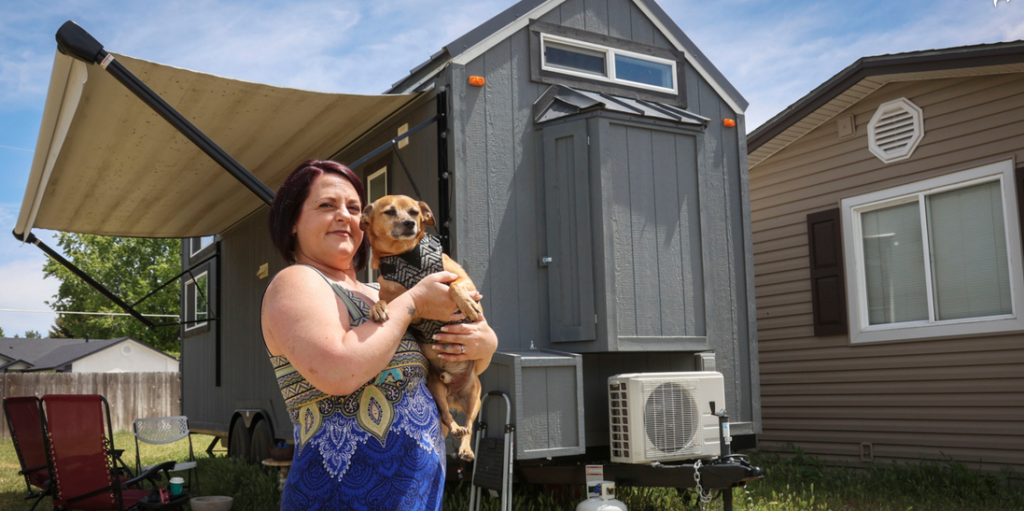
This Is Why We Need A Tiny House On Wheels Standard Instead Of RV Standards
Chasidy Decker moved her tiny home next to a single family home to lease a space and hook up to existing RV connections. She was warned by Meridian code enforcement that she couldn’t live in the mobile house and should be out in 10 days.
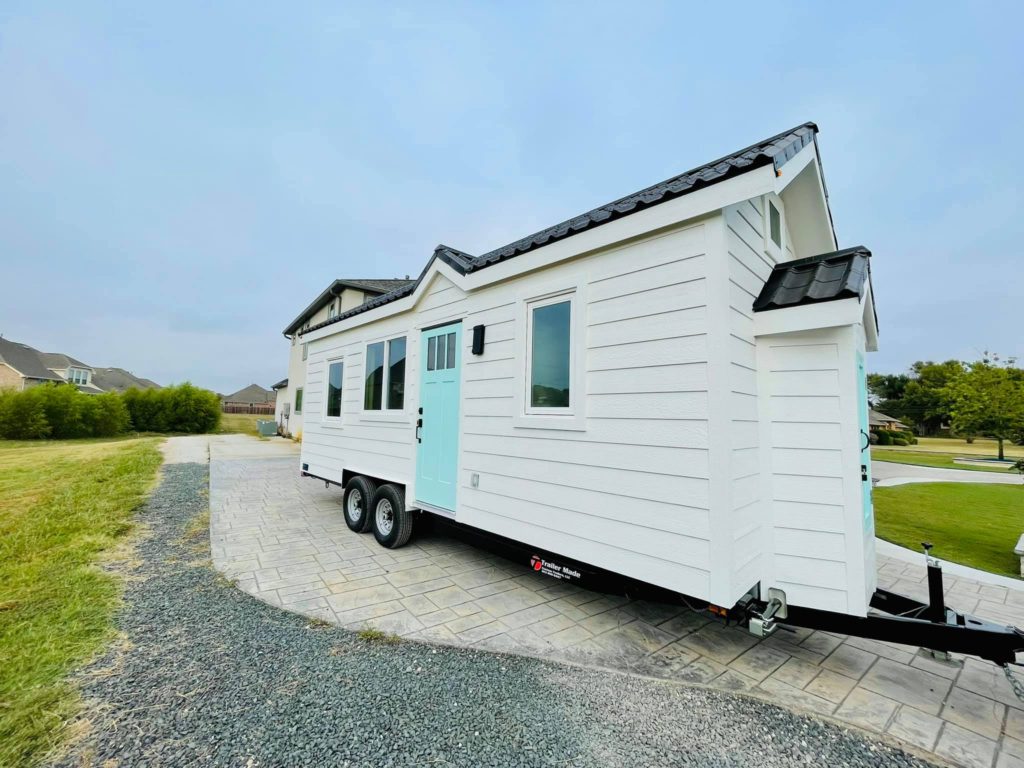
Photo Courtesy: Decathlon Tiny Homes
Tiny Houses On Wheels Barriers To Living Legally
A Global Dilemma: Is It A Building Or Is It A Vehicle?
Tiny Houses On Wheels-How many municipalities across the globe are asking the question ”Is A Tiny House On Wheels A Building Or A Vehicle?
There are numerous associations that have formed across the globe representing the stakeholders to implement change in legislation and zoning to legalize tiny houses to become a viable solution to housing. There are think tanks, affordable housing summits, festivals and meeting after meeting occurring, all with the goal to create more legal places to live.
At this time, there is not one unified industry standard that is recognized for tiny houses on wheels and each jurisdiction, bank, insurance agency, etc… could have a different definition and criteria to deny or allow them.
Tiny houses on wheels are most commonly built with RV and Park Model standards.
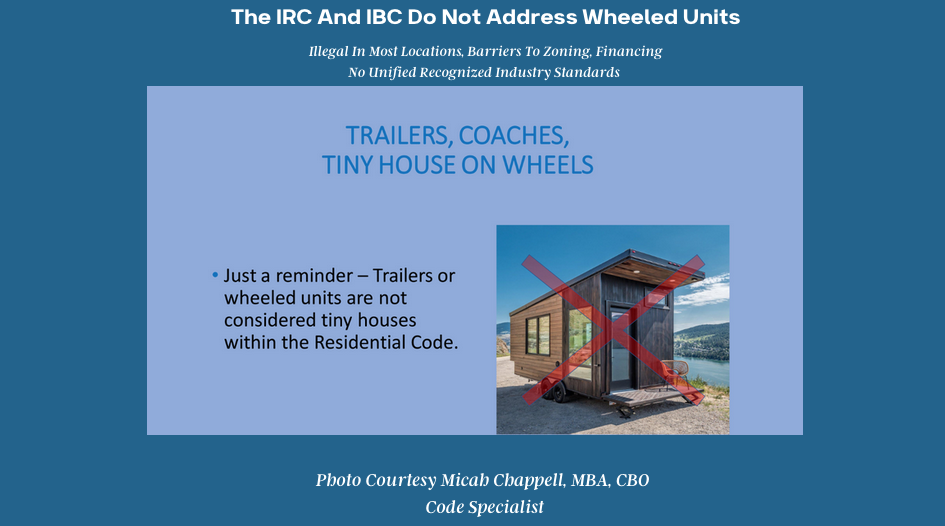
Does The IBC Or IRC Address Tiny Houses On Wheels?
This is the answer from building officials across the country.
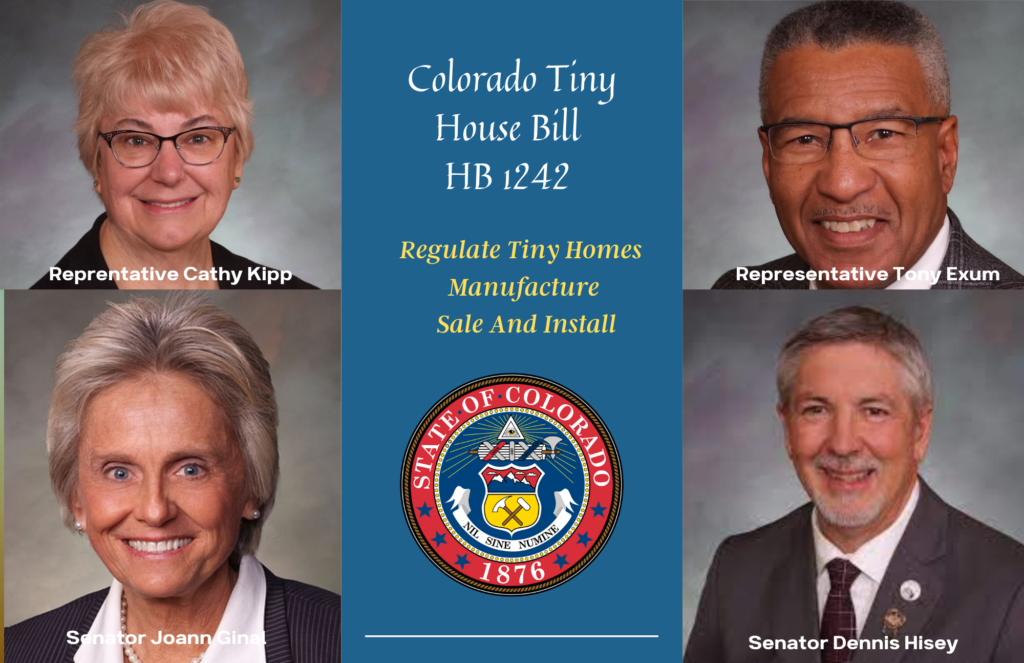
Eric Fried Chief Building Official That Initiated Tiny House Bill Endorses ASTM
Call With Colorado Legislators And Building Officials
Janet Thome, the President of Tiny House Alliance USA, and a group of stakeholders had two calls with Representative Cathy Kipp recently discussing the potential Colorado Tiny House Bill. The draft has already been edited after the results of our calls, and I will share it below. Representative Tony Exum is a new sponsor of the bill.
Related: Learn More New Draft Colorado Tiny House Bill
Related: Colorado Tiny House Bill Lists ASTM Standards
What Are Our ASTM Stakeholders Saying?
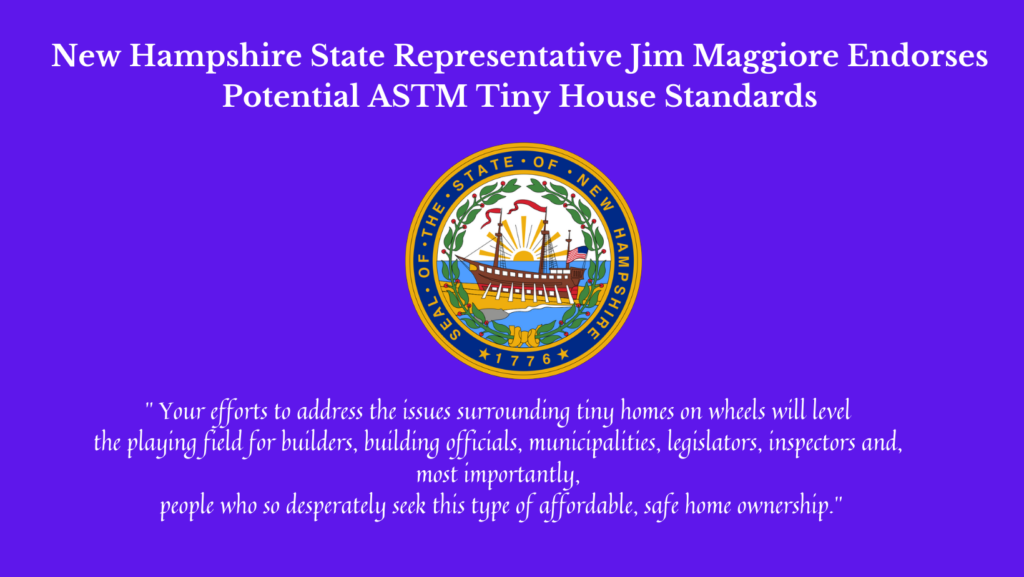
As a state representative to the New Hampshire House of Representatives I have been at the forefront of the effort to pass legislation relative to building codes for tiny homes. Standards for tiny homes on foundations as included in the 2018 IRC are very beneficial and have been included in much of the legislation before the New Hampshire House and Senate. Our struggle is consistent with the struggles in state legislatures across the country: standards for tiny homes on wheels.
In New Hampshire, a study committee was formed in 2019 to review the issues creating comprehensive standards for tiny homes on wheels. Legislation from that committee was tabled by the full Senate in 2020. Legislation was filed again in 2021 but failed in House committee.
After careful study and review, I co-sponsored yet another bill this year to advance building codes for tiny homes on wheels only to kill the bill myself in my own House committee due to defects in the proposed standards.
The people of New Hampshire are eager for ASTM International to help us and people across the country make tiny homes on wheels a viable option for affordable, safe home ownership. The standards set by ASTM International for tiny homes on wheels will conclusively settle issues such:
- Definition of a tiny home on wheels;
- Standards for foundations for tiny homes on wheels;
- Settling whether a tiny home on wheels is personal property or real property;
- Certification for plan reviews, inspections, and registrations;
- Address utilities and wastewater:
Your efforts to address the issues surrounding tiny homes on wheels will level the playing field for builders, building officials, municipalities, legislators, inspectors and, most importantly, people who so desperately seek this type of affordable, safe home ownership.
Representative Jim Maggiore New Hampshire House of Representatives
Rockingham District 22, North Hampshire
Ranking Member, Municipal And County Government Committee: Letter
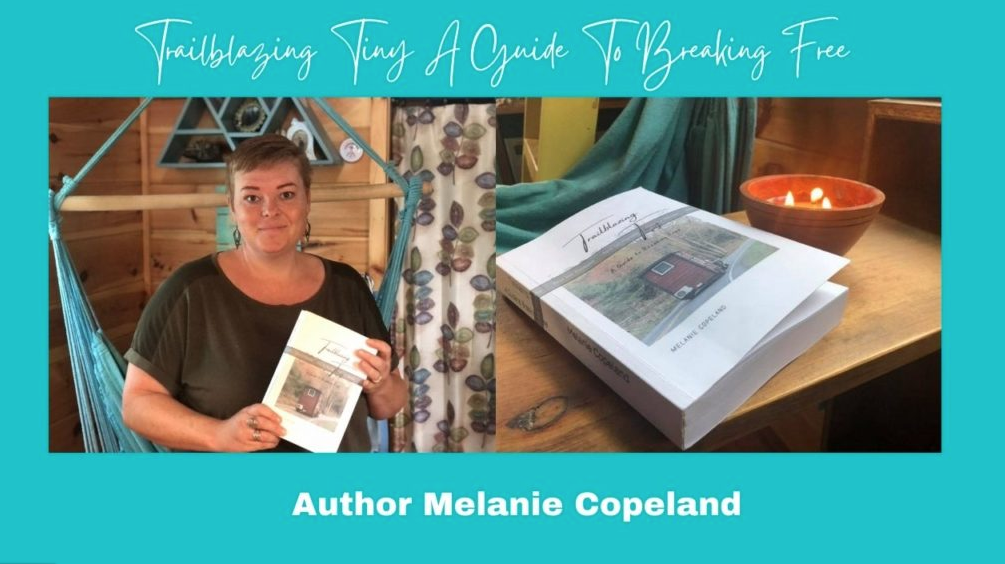
As a tiny house dweller who built my home, and fought for two years to make it a legal place to live, I see many benefits in creating a standard for the consumer, which has not really been discussed in the previous calls.
The goal of living tiny and living with less is at the heart of creating a standard for me. As a consumer our one goal is mainly the idea that we want to live a simpler life, be free of many possessions and able to have the freedom to move our homes if needed. But, for almost all consumers, myself included when I began my process, in order to do this, we have to become designers, builders, advocates, transportation experts, as well as doing the work of downsizing and trying to then find a place to park. It is quite unheard of, and no wonder there is such a lack of answers, because this not something that is attainable in order to build/buy a tiny home. We are without a place to turn when it comes to the basics of what makes a home safe. We have had to take the word of builders, hope that the people building these homes are doing it correctly, find ways to get insurance, pick our materials without an understanding of how they will work in different areas, and lastly, find a place to park them where we won’t be kicked off the land.
I call the world of tiny living the “wild, wild west.” I have literally seen my friends tiny burn to the ground due to faulty wiring, and I have another friend who gave every last dime she had to build her tiny house on wheels only to discover that it is not weighted properly and she is unable to tow it without placing over one thousand pounds of weight in the front of her home. She is now stuck and without a warranty, she has no way to travel and no money to fix her home. Countless tiny dwellers I know have been kicked from their homes, cited for living illegally, and forced to pay thousands of dollars in fines, and leave. And the stories go on and on….unfortunately.
Melanie Copeland National Spokesperson For Tiny House Alliance USA
Builder, Advocate, Author Of Trailblazing Tiny: A Guide To Breaking Free
Homesteader, Built Her Tiny House In Days. Letter
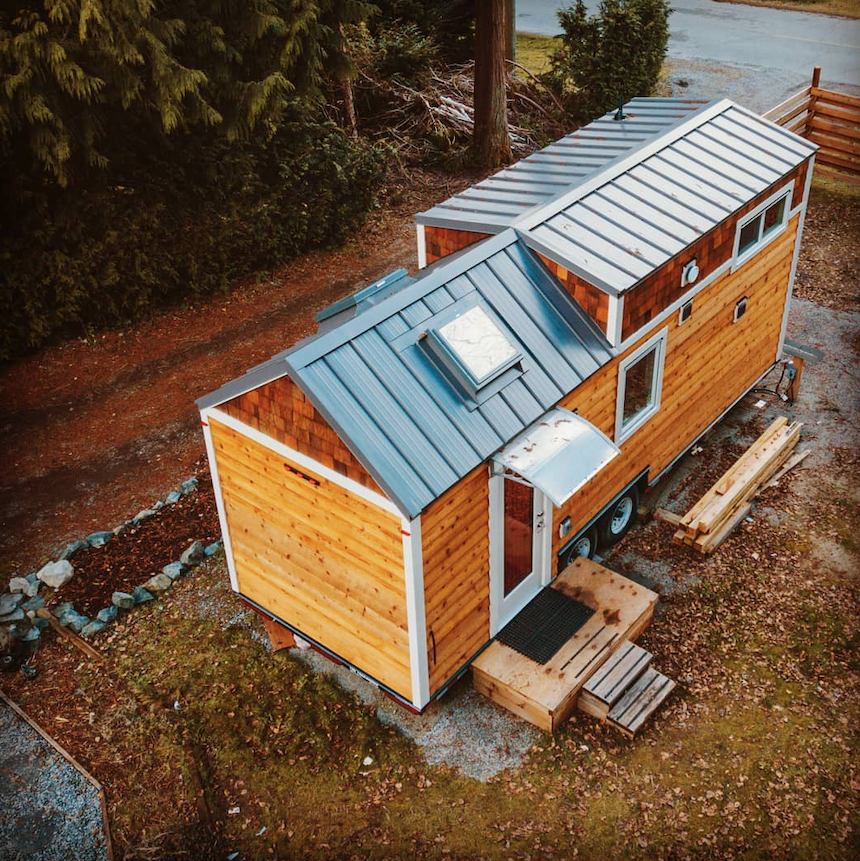
Photo Courtesy: Sunshine Tiny Homes
From A Canadian Stakeholder: Our National, provincial and municipal bylaws have all rejected the IRC references to tiny homes appendix Q and other references made by other organizations.
We have tirelessly tried to convince them to no avail. TIny home builders in Canada, at present, do not have any supportive legislature on Tiny Homes on wheels and currently operate under the CSA z240-RV-14-Series and the CSA Z-241 park model standards which limits us to recreational/seasonal use and cannot be primarily or permanently occupied. This has always been a bandaid in our eyes as builders, and is very restrictive for our clients who purchase them.
We have had high hopes for the ASTM Standard committee as we feel this standard would supersede the CSA standards and would be a catalyst to our National and Provincial codes adopting this standard. I am under the understanding that the majority of the conversations and references about the ICC and THIA are not inclusive and would like very much for this to be taken into serious consideration.
Pamela Robertson, Founder Sunshine Tiny Homes and previous President Tiny Home Alliance Canada
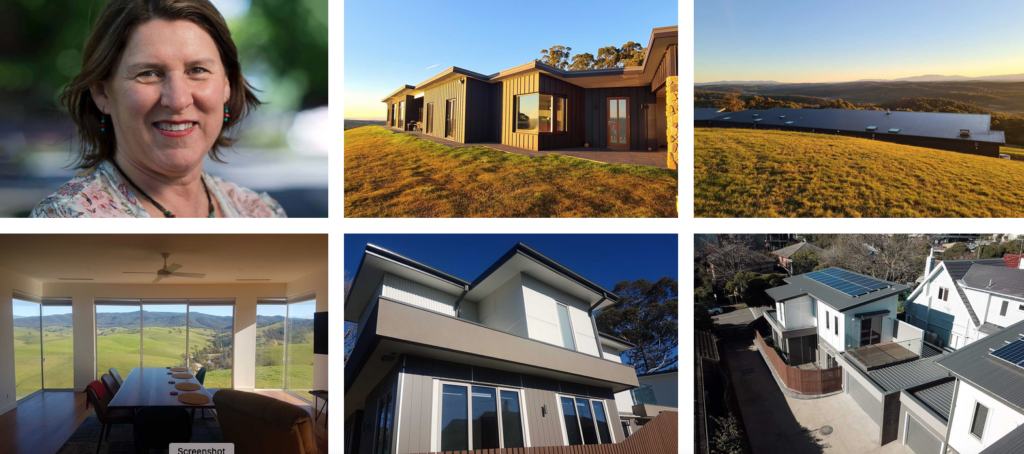
The 2021 HIA Australian GreenSmart Professional winner, Janine Strachan, is a sustainable design expert and Tiny House guru. She has promoted and worked in the area of sustainable house design and building for the past 20 years.
For the past seven years, Janine has been incorporating and expanding her knowledge of sustainable house design into her business, Green Design Solutions. Here, she designs solar passive homes in rural, regional and urban areas around Victoria. Her designs range from 7 to 7.8 stars with a focus on lightweight construction and sustainable building materials. The homes she designs are both off-grid and grid-connected to reflect the site and client requirements.
From An Australia Stakeholder: In Australia we have one National Construction Code, administered by the Australian Building Codes Board (ABCB) where it references several ASTM standards. States cannot vary the Code with the exception of relevant structural and thermal issues. We also have one national Vehicle Safety Standard. Neither of these regulations cover tiny houses on wheels and both regulatory bodies have expressed they will not create regulation for them. However, a representative of ABCB has expressed that were we to create an ASTM standard then inclusion in the NCC could be explored for inclusion.
Janine Strachan President Australia Tiny House Association
Winner Of Australian HIA Green Smart Award 2021
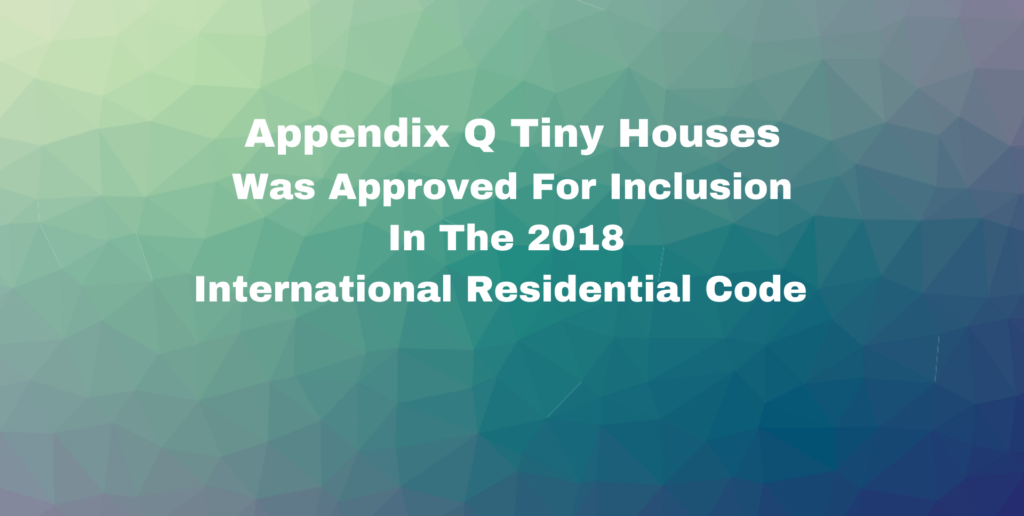
From A Consultant That Contributed To Appendix Q Tiny House: I am writing in support of ASTM hosting the development of a new Global Standard for Tiny Houses On Wheels (THOW). I was the inaugural Vice Chair of ASTM E6.71 (now ASTM E60.1), and led the development of ASTM E2392 Standard Guide for the Design of Earthen Wall Building Systems, and am currently involved with the development of the ASTM standard guide for earthen floors (Work Item Wk64123). I was also involved in the development and adoption of ICC’s Appendix Q – Tiny Houses in the International Residential Code and in the writing of the commentary for the ICC Code Commentary version of that appendix.
However, Appendix Q does not cover THOWs and there are no codes or standards currently addressing this rapidly growing arena. This is causing problems for the emerging industry as well as for local jurisdictions and all the other entities and parties involved, including all those for whom a THOW would help resolve their need for affordable housing. The need is clear and urgent, making ASTM the right place to facilitate the process.
The work that has already been done by Janet Thome to engage with ASTM and many others to explore and initiate this process is impressive and leads me to believe that all the right stakeholders will be invited to participate and the effort will be led with both the broader knowledge of the industry and the integrity to ensure that the outcome will serve the public as well as the industry. I see this as a win-win-win — for the THOW industry, for the public who needs this standard, and for ASTM.
David Eisenberg Executive Director: Development Center for Appropriate Technology: Letter
Related, Early History : So Exactly What Is Appendix Q?
You may be wondering what the adoption of the 2018 IRC Appendix Q into your state building code means for you and/or for the tiny house community in general. In brief, Appendix Q is the language from the IRC which officially defines a tiny house and creates a construction code specific to the needs of tiny houses. When the appendix is adopted into a state/jurisdictional code, builders (both professional and DIY) can go to their local building department with plans that meet the code and, after the project is complete, walk out with a Certificate of Occupancy (CO)! This code and process is for tiny houses that are used as full time residences, and will not apply to tiny houses built to RV standards.
The head of the ICC code approval process said that he would not accept the proposal as written because he believed it was what they call in the industry a “hijack” of the original proposal.
I had to make some last minute changes to the proposed code language to remove the word “moveable” from my original proposal entitled “Movable Tiny Houses.” Unfortunately, the head of the ICC code approval process said that he would not accept the proposal as written because he believed it was what they call in the industry a “hijack” of the original proposal.
“ If you keep the moveable details in there, I will throw the whole thing out”
it became crystal clear what my options were.
After many conversations and emails with the official, I decided to amend the proposal so that he would allow it to move forward. After all, when he said “if you keep the moveable details in there, I will throw the whole thing out” it became crystal clear what my options were.
That said, tiny house Appendix Q does take away the vast majority of the challenges a moveable tiny house would face, leaving the chassis/trailer as the last major potential roadblock (fear not, there’s good news to follow).
Source Washington Tiny House Association Andrew Morrison, Co-Author Appendix Q Tiny House

